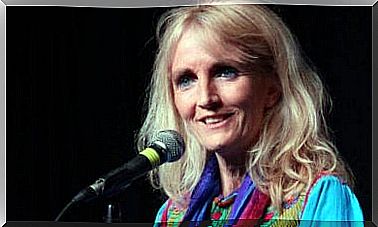Self-censorship And Information Barriers

Sometimes we choose not to disclose the information we have. We are silent without there being a real barrier to keep us from speaking. We decide it is better to be silent instead of sharing information. Because? We owe it all to a psychological mechanism known as self-censorship. Self-censorship is defined as the act of intentionally and voluntarily hiding information, albeit in the absence of formal obstacles.
If we think that disclosing some information could be counterproductive, we probably end up not sharing it. Self-censored information can contribute to coexistence between people of the same society and help prevent hostile attitudes. However, self-censorship can cause distress, guilt, and shame, as well as hinder the free flow of information. Consequently, it can lead society to ignorance, impoverish political debate and contribute to moral deterioration.
Free access to information
Free access to information gives more value to freedom of expression and critical thinking, and also allows for informed, open and free discussions; it facilitates the transparency of the system and improves the usability of public discussions.
All this allows leaders and those who are part of the company to make more balanced and better argued decisions with respect to social issues; in this way moral transgressions will be prevented. Free access to information also allows for a dynamic exchange of views and facilitates the development of tolerance.
Yet, in every society there is a certain tension between the flow of free information and its limits. In this sense, we tend to think that an uncontrolled flow can damage a society.
Indeed, even the most liberal, democratic and enlightened states believe it is necessary to put a stop to at least some information and opinions. But the limit to information is not only dictated by laws, norms and formal mechanisms, but also by individuals, as members of the community who impose self-censorship.
Characteristics of self-censorship
Self-censorship requires that the subject be in possession of information not yet disclosed. Opinions are therefore to be excluded. The information, unlike opinions, must be truthful, must refer to facts that actually happened and which are assumed to have been verified and validated, regardless of personal opinions. The content of the information can be of different types, with themes ranging from pleasant to less pleasant topics.
The act of censorship indicates the individual who intentionally and voluntarily rejects this information (does not share it) despite the absence of formal obstacles, such as censorship imposed from the outside, that prevent him from sharing it.
Here’s what it is: in the fact that people voluntarily decide not to share information in the absence of a limit that prevents them from doing so. This behavior implies that individuals informally control and regulate the flow of information; in other words, they obstruct free access to information, freedom of expression and the free flow of information.

Psychological elements underlying self-censorship
Self-censorship is based on at least three basic elements defined by psychology:
- First, human beings tend, from an evolutionary point of view, to share, communicate and disseminate information. Members of different societies have a psychological and social incentive to share information. Therefore, for self-censorship to take place, there must be another opposing reason.
- Second, the members of a group care about which group they belong to. This means that they will try to maintain a positive image and to omit any information that has negative implications for the image of the group.
- Finally, a person aware that he is in possession of new relevant information and that has not yet been disclosed will be faced with a dilemma if he is aware that these could cause harm, because in violation of a norm, a dogma, an ideology. or of a value.
The severity of the dilemma can vary from person to person and depends on the type of information, context or other factors. But an individual may experience a dilemma at least minimally when practicing self-censorship.

Factors affecting the situation
There are four factors that contribute to self-censorship: the group setting, individual factors, the type of information and circumstantial factors. The importance of the collective context is rooted in the fact that it dictates the needs and objectives of the members of society and the challenges they must face in order to achieve them.
Furthermore, it offers opportunities and places restrictions, stimuli and inhibitions, as well as the spaces and boundaries of human action. As for individual factors, personality traits, worldview, values, ideologies, emotions, attitudes and motivations will affect self-censorship.
Regarding the type of information, censorship will be affected by: the weight of a certain type of information, the importance it assumes in the present, the type of action that involves the information, the objectives of the information and the problematic questions posed by that type of information.
At the same time, the circumstantial factors associated with the collection of information, the number of people who are aware of it, the time elapsed since the information was acquired and the characteristics of the possible audience to which to disclose it (identity, role, status, etc) will affect self-censorship.
Based on this consideration, the person calculates the subjective costs and rewards for each decision and then is faced with the dilemma that arises when it comes to resolving the dissonance. The result of these subjective personal considerations determines whether a person will reveal the information to whom, if only in part or in whole, or rather if he will engage in self-censorship.







